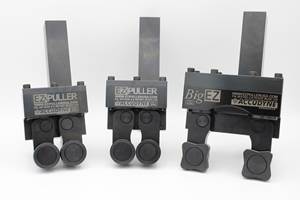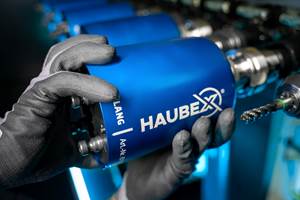Another Step Toward CNC Programming Automation
Part designers and part programmers have to think differently. Esprit FX is a development from DP Technology (Camarillo, California) that helps overcome the "disconnect" that occurs when designers pass geometry to CNC programmers. FX stands for "feature exchange." It allows programmers using Esprit CAM software to receive information about the designer's original intent automatically so that part programs can be created more quickly and more accurately.
Part designers and part programmers have to think differently. Esprit FX is a development from DP Technology (Camarillo, California) that helps overcome the “disconnect” that occurs when designers pass geometry to CNC programmers. FX stands for “feature exchange.” It allows programmers using Esprit CAM software to receive information about the designer’s original intent automatically so that part programs can be created more quickly and more accurately.
Part designers think in terms of geometry, whereas programmers think in terms of machinable features. Problem is, the programmer usually has to interpret geometry to define the feature to be machined. For example, the designer creating a pocket with islands sees each island as a geometric entity, because separate steps are required to define it. The programmer, however, sees the routines to mill around those islands as part of single pocketing operation on the CNC machine tool.
Likewise, the designer locates the center of a hole at a certain point in the solid model that represents the part. Then, the designer adds the diameter and the depth of the hole. For a stepped hole, two diameters and depths must be entered. If the hole is tapped, details about the pitch of the threads, the tolerances and so on must be noted elsewhere, because these details are not strictly part of the model. In most CAD systems, each step taken to create geometry is recorded in some sort of “feature tree” in which subordinate details and related notes are arranged in a descending, branch-like fashion.
Typically, the programmer importing a design file into a CAM system sees only the solid model that represents the final part geometry. Although it may be obvious that a cylindrical void in the model represents a hole, the programmer needs additional information to determine the best way to machine it. The FX technology makes this information available by incorporating portions of the original CAD feature tree into the Esprit user interface. In the screen on page 56, the window in the upper left shows a list of part features corresponding to the part geometry at the right. Clicking on a feature in the model or highlighting a feature in the list calls up related information from the feature tree and presents it in the window to lower left. This information includes tolerances, material properties, surface finishes, administrative data and so on.
With access to this information, the programmer can begin selecting appropriate machining routines and parameters in Esprit. Because many of these routines and parameters are likely to be stored in a library or database (in this case, the Esprit KnowledgeBase), the programmer can “click through” this process very rapidly. According to Chuck Mathews, technology vice president at DP Technology, beta users have experienced a 10-to-1 increase in productivity for programming hole making operations.
Portions of the FX technology will be available to Esprit users in the latest version of the software. This includes initial capability in milling and wire EDM (electrical discharge machining) for solid models created in Solid Edge and Solidworks. Support for other major solids-based CAD systems is planned, as is feature exchange functionality in turning.
Related Content
Zero-Adjustment Bar Pullers Simplify Turning Automation
Spring-loaded grippers and adjustable programming are enabling bar pullers to fulfill their promise to save time and money in CNC turning automation.
Read MoreLean Approach to Automated Machine Tending Delivers Quicker Paths to Success
Almost any shop can automate at least some of its production, even in low-volume, high-mix applications. The key to getting started is finding the simplest solutions that fit your requirements. It helps to work with an automation partner that understands your needs.
Read MoreUsing the Toolchanger to Automate Production
Taking advantage of a feature that’s already on the machine tool, Lang’s Haubex system uses the toolchanger to move and store parts, making it an easy-to-use and cost-effective automation solution.
Read MoreBuilding an Automation Solution From the Ground Up
IMTS 2022 provides visitors the opportunity to meet with product experts to design automation solutions from scratch.
Read MoreRead Next
The Cut Scene: The Finer Details of Large-Format Machining
Small details and features can have an outsized impact on large parts, such as Barbco’s collapsible utility drill head.
Read More3 Mistakes That Cause CNC Programs to Fail
Despite enhancements to manufacturing technology, there are still issues today that can cause programs to fail. These failures can cause lost time, scrapped parts, damaged machines and even injured operators.
Read More


























